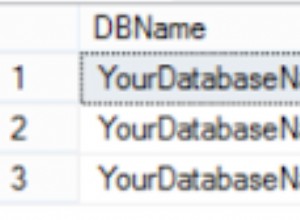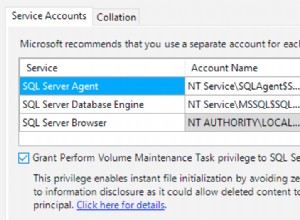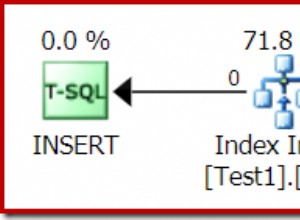También he escrito sobre este tema aquí. Aquí hay un fragmento que ilustra cómo se puede hacer esto:
try (CallableStatement call = c.prepareCall(
"declare "
+ " num integer := 1000;" // Adapt this as needed
+ "begin "
// You have to enable buffering any server output that you may want to fetch
+ " dbms_output.enable();"
// This might as well be a call to third-party stored procedures, etc., whose
// output you want to capture
+ " dbms_output.put_line('abc');"
+ " dbms_output.put_line('hello');"
+ " dbms_output.put_line('so cool');"
// This is again your call here to capture the output up until now.
// The below fetching the PL/SQL TABLE type into a SQL cursor works with Oracle 12c.
// In an 11g version, you'd need an auxiliary SQL TABLE type
+ " dbms_output.get_lines(?, num);"
// Don't forget this or the buffer will overflow eventually
+ " dbms_output.disable();"
+ "end;"
)) {
call.registerOutParameter(1, Types.ARRAY, "DBMSOUTPUT_LINESARRAY");
call.execute();
Array array = null;
try {
array = call.getArray(1);
System.out.println(Arrays.asList((Object[]) array.getArray()));
}
finally {
if (array != null)
array.free();
}
}
Lo anterior imprimirá:
[abc, hello, so cool, null]
Tenga en cuenta que ENABLE / DISABLE La configuración es una configuración de conexión amplia, por lo que también puede hacer esto en varias declaraciones JDBC:
try (Connection c = DriverManager.getConnection(url, properties);
Statement s = c.createStatement()) {
try {
s.executeUpdate("begin dbms_output.enable(); end;");
s.executeUpdate("begin dbms_output.put_line('abc'); end;");
s.executeUpdate("begin dbms_output.put_line('hello'); end;");
s.executeUpdate("begin dbms_output.put_line('so cool'); end;");
try (CallableStatement call = c.prepareCall(
"declare "
+ " num integer := 1000;"
+ "begin "
+ " dbms_output.get_lines(?, num);"
+ "end;"
)) {
call.registerOutParameter(1, Types.ARRAY, "DBMSOUTPUT_LINESARRAY");
call.execute();
Array array = null;
try {
array = call.getArray(1);
System.out.println(Arrays.asList((Object[]) array.getArray()));
}
finally {
if (array != null)
array.free();
}
}
}
finally {
s.executeUpdate("begin dbms_output.disable(); end;");
}
}
Tenga en cuenta también que esto obtendrá un tamaño fijo de 1000 líneas como máximo. Es posible que deba realizar un bucle en PL/SQL o sondear la base de datos si desea más líneas.
Una nota sobre cómo llamar a DBMS_OUTPUT.GET_LINE en cambio
Anteriormente, había una respuesta ahora eliminada que sugería llamadas individuales a DBMS_OUTPUT.GET_LINE en cambio, que devuelve una línea a la vez. He evaluado el enfoque comparándolo con DBMS_OUTPUT.GET_LINES , y las diferencias son drásticas:hasta un factor 30 veces más lento cuando se llama desde JDBC (incluso si no hay una gran diferencia cuando se llama a los procedimientos desde PL/SQL).
Entonces, el enfoque de transferencia masiva de datos usando DBMS_OUTPUT.GET_LINES definitivamente vale la pena Aquí hay un enlace al punto de referencia:
https://blog.jooq.org/2017/12/18/the-cost-of-jdbc-server-roundtrips/




